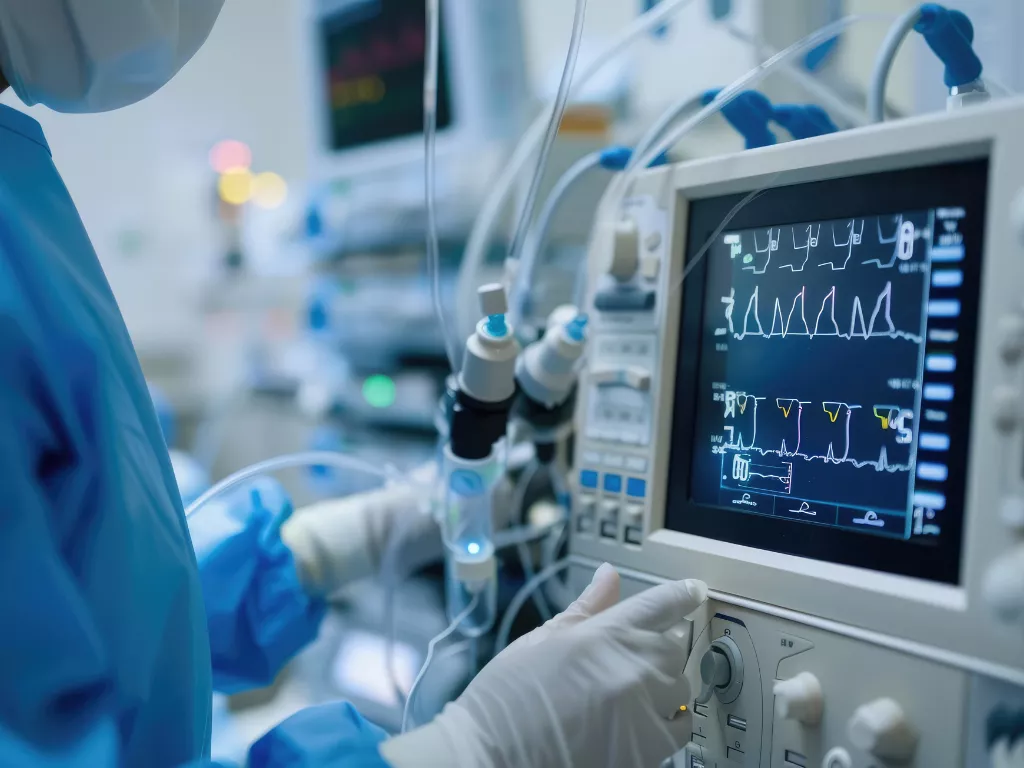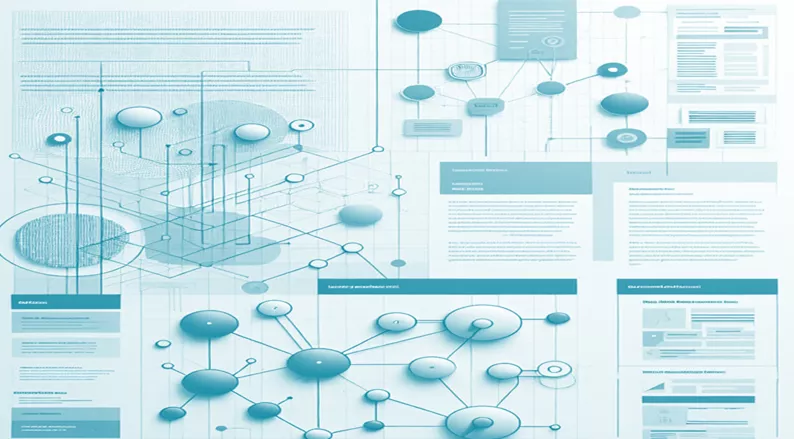A User-Focused Approach to Medical Device Development: Identifying Usability Challenges and Prioritizing Solutions
Introduction
Users play a crucial role in the user-interface development process. They contribute at different stages of device development. User involvement during the initial stages of medical device development and usability engineering procedures helps in reducing serious adverse issues during device use. Users such as healthcare professionals and patients provide valuable insights into their requirements, preferences and challenges related to medical device usage.

Proactively understanding user requirements and user needs early in device development helps in designing devices that are intuitive and effective and adaptable in real-world scenarios. Users can help highlight critical human factors considerations during the phase of device development. Iterative and evaluation of design prototypes with representative users allows designers to identify usability issues and user interface problems, which enables them to make the necessary design changes or improvements before finalizing the design. Usability testing ensures that the device interface is clear and potential errors are mitigated. Clear and comprehensive shaped by user feedback, can empower users to better understand the device's functionality.
While detailed human factors guidelines offer specific instructions and considerations, understanding and applying the broader principles of human factors engineering is crucial. These principles provide a framework that ensures the device is usable, safe, and effective even if it doesn't meet every single guideline. While specific guidelines address particular aspects of design, the general principles ensure the device aligns with human capabilities and limitations. If a device violates these fundamental principles, it can lead to significant issues, even if it follows detailed guidelines. Therefore, a strong grasp of these principles can help designers create devices that are more robust and user-friendly, even when they face practical constraints.
This article provides a concise overview of incorporating Usability Engineering/ Human Factors Engineering process into medical device design and development ensuring safety and effectiveness. By adhering to standards, user-centered design, ethical considerations, iterative testing and post market surveillance, this approach emphasizes that integrating these elements can help developers to not only meet necessary technical and regulatory requirements but also ensure and enhance user experience and safety.
Complexity in medical device development
The Growing functional complexity of medical devices presents significant challenges related to efficacy, safety and reliability. Key parameters to be considered are:
- Increased functional complexity – Integration of advanced technologies such as AI and IoT enhances capabilities of medical devices but also complicates user interaction and system integration. Many Medical devices serve multiple purposes, requiring user to understand and manage various functionalities, which can increase the potential for misuse or error.
- Efficacy concerns – Clinical validation is crucial to demonstrate new devices perform effectively in real world settings. Performing continuous usability assessments can help ensure that devices are intuitive and user friendly, reducing the risk of ineffective use.
- Safety Issues – Comprehensive risk management frameworks help to identify, evaluate and mitigate potential hazards throughout the device lifecycle. Incorporating features that allow for continuous monitoring of device performance, enabling timely detection of safety issues.
- Reliability challenges – Establishing rigorous quality control processes ensures devices consistently meet safety and performance standards. Monitoring devices once they are placed in market helps to identify and address reliability issues as they arise.
- Cross disciplinary collaboration – Rapid iteration, engaging a range of stakeholders including engineers, clinicians and patients in the early development process will address complexities from multiple perspectives.
By addressing these challenges proactively, developers can improve overall safety, efficacy and reliability of medical devices in complex healthcare landscape.
Challenges in medical device development
Medical devices are classified broadly into 3 categories based on their intended use and the level of risk they pose to patients.
- Class I - Low risk Devices: Usability Impact: Simple designs often lead to intuitive use, but poor usability can still result in user error
- Class II - Moderate risk devices: Usability Impact: Usability is critical due to the complexity of devices; poor usability can lead to significant patient safety risks.
- Class III - High risk devices: Usability Impact: Usability is vital as these devices often have life-or-death implications. Usability testing is essential to ensure safety and effectiveness.
Designing of medical devices presents unique challenges, physical constraints and usability. Considerations such as
- Understanding the use environment
- User interaction
- Storage solutions
- Adaptability to different settings
- Safety and compliance
- Collaborative design
By addressing these factors, manufacturers can create medical devices that are not only functional and safe but also adaptable to various environments, improving patient care and clinician efficiency.
Recent incidents involving medical devices underscore the critical importance of optimising both hardware and software user interfaces. These interfaces must align with users’ requirements and expectations which in turn minimize the risk of errors and possible potential misuse of device.
Patient safety relies heavily on users receiving the appropriate information and control options at the right moment, enabling them to understand the situation and perform necessary actions. Usability issues in medical devices can span from minor flaws to critical deficiencies that result in various errors. Inaccuracies in medical devices, whether related to hardware or software, can lead to critical outcomes, including serious injuries or fatalities.
Design and development of a medical device that accommodates diverse user population can be quite challenging. User groups differ widely in characteristics such as physical size, cognitive skills, training and learning, skills in performing tasks leading to diversified user interface requirements. Balancing these varied needs with usability engineering ensures critical user interface requirements are met.
As medical device design is becoming increasingly intricate, ensuring that they are user friendly is essential. Growing complexity makes usability a critical factor in the selection of equipment’s for healthcare facilities. Healthcare providers increasingly prioritize usability to minimize errors, enhance workflow efficiency and improve overall user satisfaction. This focus on usability not only supports improved patient outcomes but also fosters a safer and more efficient healthcare environment.
Unaddressed needs
Innovating medical devices for diverse populations or rare diseases involves even greater challenges. Involving patients is essential not only for gaining insights into their needs when prioritizing research and development, but also for enhancing the device development process itself. The patient perspective plays a critical role in several key areas:
- Clinical Trial Design: Patients can contribute valuable input on trial designs, helping to clarify the risks they are willing to accept for potential benefits, which informs the overall benefit-risk assessment.
- Regulatory and Reimbursement Insights: Their perspectives can assist regulatory bodies and reimbursement entities in making decisions that are more aligned with patient expectations and experiences.
- Post market Evaluation: As end users, patients offer vital feedback on the device’s performance and quality after it hits the market, highlighting areas for improvement and refinement.
Incorporating the patient viewpoint throughout the development process ensures that the resulting device effectively addresses the needs and preferences of its intended users. It is essential for all healthcare stakeholders to give priority to these efforts and enhance their strategies to incorporate patient input in the product development decision-making process.
Optimize design using human factors principles
Involving Human factors principles in the early phases of device development can have profound It serves as a reliable method for identifying user interface design issues that may impact safety, effectiveness and user satisfaction. Broadening testing to encompass multiple attributes from design to disposal ensures manufacturers achieve the desired outcome.
During testing representative users perform common or critical tasks in a simulated clinical environment. These evaluations can aid designers in improving their prototypes. Testing early and throughout the design cycle prevents issues from arising later, when solutions may be more costly to implement.
Selecting appropriate participants is crucial. Rather than focusing solely on those with specific knowledge, it is essential to choose participants that represent a diverse range of user characteristics, including physical abilities, skills, and psychological characteristics. This ensures comprehensive evaluation and helps anticipate potential design failures.
When device fails, it is crucial to communicate the failure, as this helps designers identify the cause and recommend suitable remedial actions. Ideally devices are designed to fail safely, however interventions are necessary to ensure a safe outcome. Designers must consider all potential failure modes and develop strategies helping users respond appropriately .
Medical devices are often used in complicated, isolated, or dynamic environments. Considering external factors such as temperature, noise, and protective gear is essential in creating an effective human factors-oriented design.
Best practices
- Consider the Context of Use
Designers should focus on a diverse user group and real-world conditions, evaluating the device's impact during the design phase to ensure seamless integration into clinical environments. - Consider Worst Case Scenarios
Rigorous testing under worst-case scenarios helps identify potential failures and ensures a resilient, high-quality product. - Make Devices as Rugged as Necessary
Choosing the right components can ensure the device resists damage and remains user-friendly. - Limit User Workload
Healthcare professionals often work under demanding conditions. Minimizing workload requirements can prevent errors and improve patient care. - Consider the Potential for Device Migration into Additional Users or Use Environments
Devices may be used in a variety of environments (ICU, operating theaters, home settings, etc.) and by diverse user groups. Designing for flexibility can safeguard users across multiple contexts.
Conclusion
The principles and considerations discussed here are critical in medical device development, particularly in designing user interfaces. By understanding potential future scenarios and incorporating usability aspects into the design and development phases, while adhering to current standards, designers can minimize errors and enhance device functionality.
How Decos can help clients
At Decos, we specialize in ensuring human factors engineering requirements are met, we ensure that systems and processes are designed and developed with a deep understanding on human capabilities and needs. We provide specialized solutions to enhance usability and effectiveness, including user-centered design and ensure device meets potential requirements. We help companies meet global regulatory requirements in usability engineering, ensuring compliance across international markets. Partnering with us ensures your medical device are both compliant and supportive of patient safety.
References
- IEC 62366-1 Medical devices — Part 1: Application of usability engineering to medical devices
- FDA Guidance: Medical Device Use-Safety: Incorporating Human Factors Engineering into Risk Management.
- FDA Guidance: Applying Human Factors and Usability Engineering to Medical Devices
- FDA Guidance: Applying Human Factors Engineering to Combination Products
- Medical device usability: literature review, current status, and challenges by Marylene Sousa Guimarães Roma & Euler de Vilhena Garcia – Research on Biomedical Engineering.

This blog is authored by Sridharan Padmanabhan, Senior Systems Engineer (Human Factors) at Decos. With a strong background in usability engineering and regulatory compliance, he brings extensive experience in human factors for medical devices, ensuring they meet global usability standards, prioritizing safety.
Decos is a cutting-edge technology services partner ready to meet your diverse needs across various industries, including the medical domain. If you have a question about one of our projects or would like advice on your project or a POC, contact Devesh Agarwal. We’d love to get in touch with you!
Discover more

Transforming Instructions for Use (IFU) with AI: Enhancing Technical Documentation

Reducing Latency in Real-Time Medical Monitoring to enhance speed, accuracy and patient safety.

